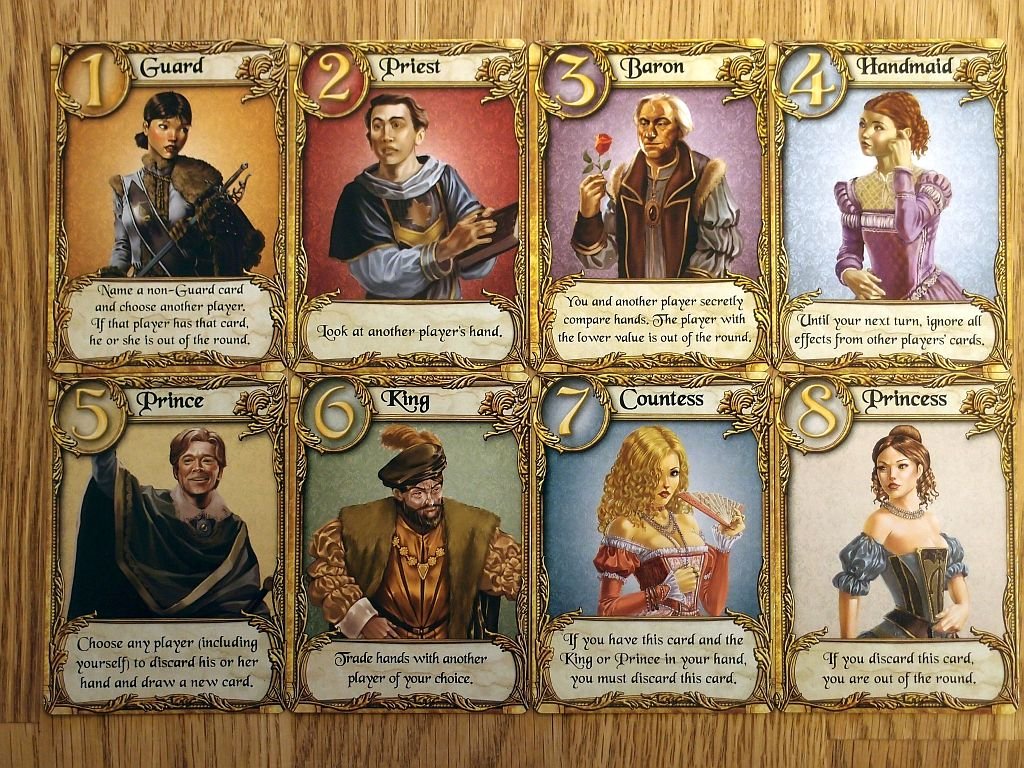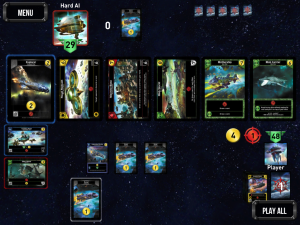Thebes is a moderate-strategy game, first published in 2007, that uses an archaeology theme to bring a couple of clever mechanics to the genre without becoming too complex or slow. It also is the rare game that plays as well with two players as it does with more, even though the tenor of the play and your strategy will both vary greatly with the number of players. (It’s back in print as of January 2021.)
In Thebes, you’re a lead archaeologist who must gather resources called “knowledge points” before you head off to one of five dig sites (each with a unique color) to try to retrieve valuable artifacts. You gather these knowledge points in seven European cities, so the entire map has just twelve sites and getting around is straightforward, and by taking one of four cards shown on the board at any given time. To draw a specific card, you move to that city and pay the cost to acquire the card – more on that cost in a moment – after which you add it to your hand. Most cards contain one to three books in the specific color of one of the dig sites; those are “specialized” knowledge points, good only for that dig site. There are “general” knowledge points, blank books that count toward any dig site; assistant cards, which you collect in sets to add more specialized knowledge for any dig site; shovel cards, which you collect in sets to draw more artifacts when you dig; and rumor cards, which you count once as specialized knowledge during a single dig and then discard.
When you go to dig, you move to the city of the dig site and count all of your knowledge applicable to that dig – all your specialized knowledge points in that color, plus all of your general knowledge points up to the number of the specialized points, and then use a wheel to determine how many artifacts you can take from the dig site (a bag of tokens), which is also a function of how many weeks you wish to spend digging. There is no money in Thebes; the currency is time, as it takes one week to move between adjacent cities, one to six weeks for any card you take from the board, and up to ten weeks for any dig. The game takes place over three years for two players and two years for four players, so time is truly fleeting in Thebes and you need to budget carefully.
Those bags are the one truly new mechanic in Thebes, a game without much randomness until you start pulling tokens from a bag. There are 31 artifact tokens in each color, 13 worth one to six points each, two tokens worth knowledge points (one general, one specific to another color), and 16 blanks. At the start of the game, you take a one-point token in each color and place it on the map, so that the first player to dig there gets that artifact as a bonus. Then the digging begins: You use the wheel to determine how many artifacts you can pull (again, a function of your knowledge points and the number of weeks you wish to spend), and then take out that many tokens. You keep any that aren’t blank … and you put the blanks back in the bag. That’s right: The odds of pulling out a non-blank token just get worse as the game goes on. It pays to be the first one into the tomb.
Most of your points (about 75-80% in our experience) will come from artifacts you gain from digging. There are three other ways to gain points in Thebes. Two of them, Congress cards and Exhibitions, are available in the main card deck and will appear in the four card spaces on the board along with the cards described above. Congress cards are simple – there are nine, and you get points based on how many you have, with the point totals rising sort of logarithmically, up to a maximum bonus of 28 points for seven cards. Exhibitions come up in the second half of the game, roughly, and they reward you with four or five bonus points for artifacts you’ve already obtained; if you have the right combination of artifacts, you go to the city on that card, take it from the board, and gain those points at the end of the game. It’s a significant cost in weeks, however, so the payoff isn’t great. The final way to gain points is to have the most specialized knowledge points in any specific color, with the leader in each color getting five points, co-leaders in any color each getting three.
The one other unusual mechanic has appeared in other games, including an even more elegant implementation the wonderful 2010 title Glen More, where one player might get multiple consecutive turns because other players have moved too far ahead. Players count their weeks spent via a track around the outside of the board, and the player whose token is the furthest behind gets to take the next turn. Say you’re playing a two-player game and your opponent chooses a ten-week dig in Palestine; if you can play your cards right, literally, you might get four turns in a row to grab other cards while s/he is busy, because you’ll move around the track but still be behind your opponent.
Games take under an hour and setup is very simple, assuming you don’t do what I did once and confuse the colors of the bags. Thebes is also quite language-proof, with some of the clearest iconography of any game I know, at least among games at this level of complexity; I’d compare it to Ticket to Ride’s simplicity in that one aspect. There’s nothing in here an eight-year-old couldn’t handle, and most of the strategy involved is easy to understand; the hardest part of the game to grasp might be estimating the expected values of digs, especially once players have already been in a bag once or twice but might have yet to discover some of the most valuable tokens. (There are five cards showing the distribution of point-bearing tokens in each bag.) It’s a bright, attractive game with a well-integrated theme that fully ties into and even explains the game’s most notable mechanic, a very solid addition for anyone looking for a family game that kids will like but that has enough substance for the adults.







